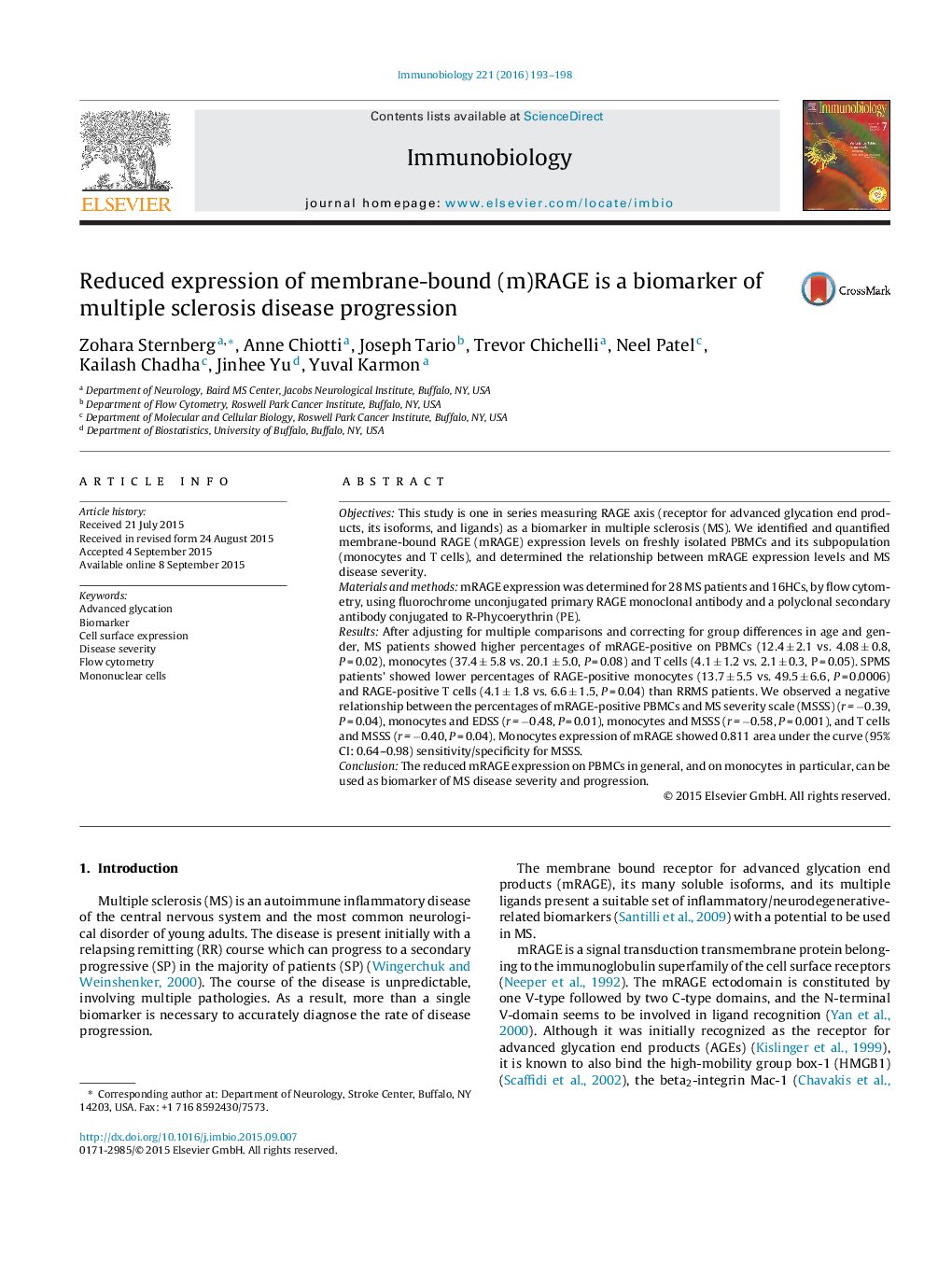| Article ID | Journal | Published Year | Pages | File Type |
|---|---|---|---|---|
| 2182761 | Immunobiology | 2016 | 6 Pages |
ObjectivesThis study is one in series measuring RAGE axis (receptor for advanced glycation end products, its isoforms, and ligands) as a biomarker in multiple sclerosis (MS). We identified and quantified membrane-bound RAGE (mRAGE) expression levels on freshly isolated PBMCs and its subpopulation (monocytes and T cells), and determined the relationship between mRAGE expression levels and MS disease severity.Materials and methodsmRAGE expression was determined for 28 MS patients and 16HCs, by flow cytometry, using fluorochrome unconjugated primary RAGE monoclonal antibody and a polyclonal secondary antibody conjugated to R-Phycoerythrin (PE).ResultsAfter adjusting for multiple comparisons and correcting for group differences in age and gender, MS patients showed higher percentages of mRAGE-positive on PBMCs (12.4 ± 2.1 vs. 4.08 ± 0.8, P = 0.02), monocytes (37.4 ± 5.8 vs. 20.1 ± 5.0, P = 0.08) and T cells (4.1 ± 1.2 vs. 2.1 ± 0.3, P = 0.05). SPMS patients’ showed lower percentages of RAGE-positive monocytes (13.7 ± 5.5 vs. 49.5 ± 6.6, P = 0.0006) and RAGE-positive T cells (4.1 ± 1.8 vs. 6.6 ± 1.5, P = 0.04) than RRMS patients. We observed a negative relationship between the percentages of mRAGE-positive PBMCs and MS severity scale (MSSS) (r = −0.39, P = 0.04), monocytes and EDSS (r = −0.48, P = 0.01), monocytes and MSSS (r = −0.58, P = 0.001), and T cells and MSSS (r = −0.40, P = 0.04). Monocytes expression of mRAGE showed 0.811 area under the curve (95% CI: 0.64–0.98) sensitivity/specificity for MSSS.ConclusionThe reduced mRAGE expression on PBMCs in general, and on monocytes in particular, can be used as biomarker of MS disease severity and progression.
